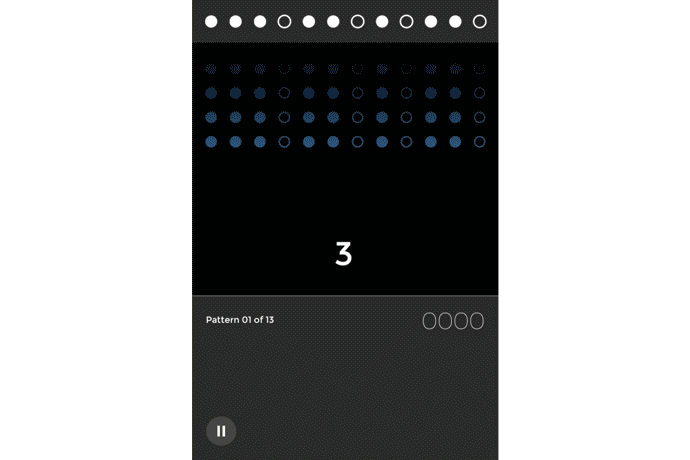Yesterday, the London Sinfonietta, Touchpress and Queen Mary University of London (with support from the Digital R&D Fund for the Arts) released a free universal iOS app for iPad, iPhone, and iPod Touch: Clapping Music App. Its purpose? Get you even more obsessed with Steve Reich’s iconic Clapping Music.
Written in 1972, the piece calls for two performers and is performed entirely by clapping (although it’s fun to perform the piece while juggling, too) a shifting pattern. From clapping to tapping? Making an app sounds like a great idea—but is it?The main focus of the Clapping Music app is to practice, learn, or perform—if you don’t mind it doing it with a smartphone—the piece and its patterns.
Turning a piece into a game
The Digital R&D Fund for the Arts supports projects that use digital technology to reach an audience. The idea behing the Clapping Music app is “whether digital gaming technology can teach users specific rhythmic skills, and whether this could lead to a wider audience engagement with the art form.”
Just like any good game, or gamified system, there is a practice mode and a game mode, with levels.
The practice mode lets one drill a specific pattern (there are, of course, 12), or any series of contiguous patterns if one’s interested in working on transitions. The app displays and keeps track of one “average tap accuracy” (in %). I can’t wait to hear about musicianship TAs using the app in class and grading students on their average tap accuracy.
The game mode has three levels (easy, medium, and hard) and the only difference is tempo: q = 130, 140 or 150-160 (for reference, the score has a metronome mark of q = 160-184).

Don’t freak out. This is just a GIF. The game is not that fast.
The user interface is a bit confusing: The top of the screen displays a fixed reference pattern (full circle for a clap, empty circle for a rest) while the middle third of the screen shows rows of the current pattern (one per repetition). Not unlike a karaoke machine, the current beat lights up as the rows move down the screen (the contrast of the current beat is very low while one plays; it’s annoying).
If one is accurate, the rows will reach the bottom of the screen and disappear as a repetition is completed. A horizontal line separates the patterns so one knows when a transition is coming.
If one is not accurate, the rows of patterns turn to red and recede back up. When they disappear, the game is over.
The Clapping Music app keeps track of one’s score. The official website invites people to submit their high scores “for a chance to perform Clapping Music live on stage with the London Sinfonietta.” The airfare is not included.
A place to learn, too?
A section within the app features information about Clapping Music (including videos), Electric Counterpoint (why? I’m not sure) and the composer himself.
Touchpress, who developed the app, showcases a couple of their other apps, including Juilliard String Quartet and Juilliard Open Studios.
So?
The app came out yesterday and I still don’t know how I feel about a piece being turned into a game—even if it’s meant to educate and engage. The addition of Electric counterpoint under “About the music” feels like a nod to Jonny Greenwood’s (Radiohead’s lead guitarist and keyboardist) repeated performances. He surely brought a lot of new listeners to Reich’s music, in the UK and elsewhere.
The Clapping Music app is definitely entertaining. The design is slick and doesn’t get in the way of the music. I wish it could be possible to play with another person, by either tapping on the same device, or connecting another device via Bluetooth.
A note for Android users: Based on their catalog of apps, it looks like Touchpress does not develop for your OS.
Download the Clapping Music app for iOS here and let us know what you think in the comments section below.






















